North India or South India- Which part of India is best?
Is North India better or South India for my India holiday?
What is better to visit, North or South India?
Should I go to India north or south?
Is India in the north or south?
Is South India more beautiful than North India?
Why is South India better than North?
Is South India cheaper than North India?
How much does a South India trip cost?
North India or South India Tour Packages is a never-ending debate!
Although North India and South India are a part of the same country, there are several distinct dissimilarities between North India and South India. Other than history, food, architecture, and culture, even the types of tourist destinations and travel experiences the North and South offer are different!
When you pick a destination in India for tourism, you’re essentially opting to explore the culture and historical influences of a particular region out of North India or South India Tour Packages.
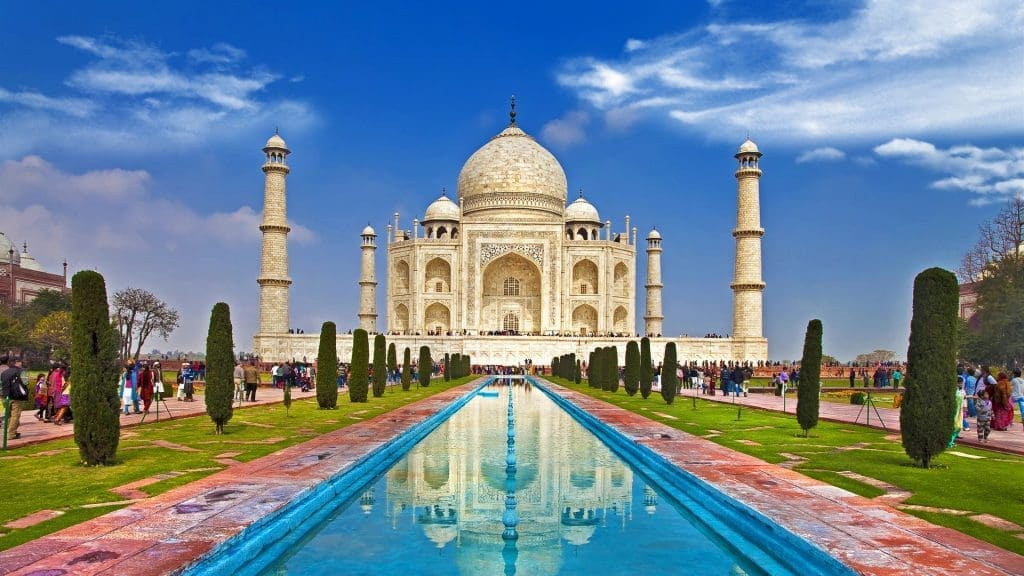
To help you better understand what each offers, we have compiled a comprehensive list of things that differentiate them. These major North India vs South India distinctions can help you decide what to explore depending on the experiences you’re looking for.
North India or South India- Which is better to visit?
North India is primarily dominated by the Hindi-speaking states of Delhi NCR, Punjab, Rajasthan, Uttar Pradesh, Uttarakhand, Himachal Pradesh, Jammu & Kashmir, and Haryana.
South Indian states include Kerala, Tamil Nadu, Telangana, Karnataka, and Andhra Pradesh.
ALSO SEE – South India tour Packages
India is a vast country with 30 states and so many languages. India has got mighty Himalayas in the North and Indian Ocean in the South. There is backwaters of Kerala and temples of Tamil Nādu in South India while palaces of Rajasthan and snow in Kashmir in North India. Each tourist attraction in North India or South India is diverse, delightful, culturally distinct and deeply engaging.
Here is a comprehensive guide to choose between North India and South India and choose the best tour for you.
1. Weather & Climate of North and South India
North India vs South India climate and weather conditions are distinct in every sense. India enjoys a diverse terrain, and with it, a diverse climate.
The weather in the north India is mostly dry and cool, much colder in winter, owing to the border of the Himalayan range that drives its weather and climatic conditions. The southern Indian states are bounded by the Bay of Bengal on one side and the Arabian Sea on the other, giving it a tropical climate and warm, humid weather.
ALSO SEE – Best Time To Visit Kerala (UPDATED)- Summer, Winter, or Monsoon?
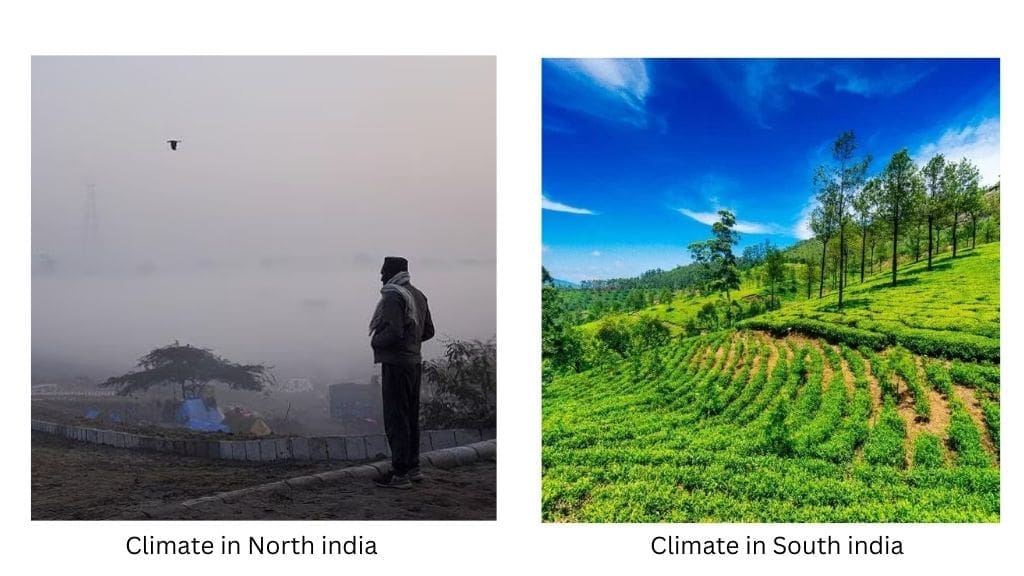

The chance to enjoy the icy cold of Ladakh and the tropical beaches of Kerala brings a zillion travelers here from every corner of the world each year.
2. Topography
India is known for its diverse topography that encompasses almost every form of land feature on earth. From rivers, lakes, forests, grasslands, plateaus, hills, beaches, to even volcanoes, India has it all!
Northern India mostly constitutes a hilly terrain and mountains. The northern states of Uttarakhand, Kashmir, Himachal Pradesh, and Ladakh mostly constitute a hilly terrain. The southern states are known more for their palm-fringed beaches and dense evergreen forests sheltering diverse flora and fauna in Western Ghats.
However, the North India vs South India topography distinction isn’t a major one as the south too has its fair share of hills, and the plains of the north too experience hot and humid weather in the summers.
One thing to not though is that there are so many unique places like Alleppey in Kerala which is well known for its backwaters which is unique not only in India but also in the world. You can experience Alleppey in one of the unique houseboats which is a traditional boat in Kerala that was used to carry rice in the olden days.
Planning to visit Alleppey? – Alleppey Tour Packages
3. Languages
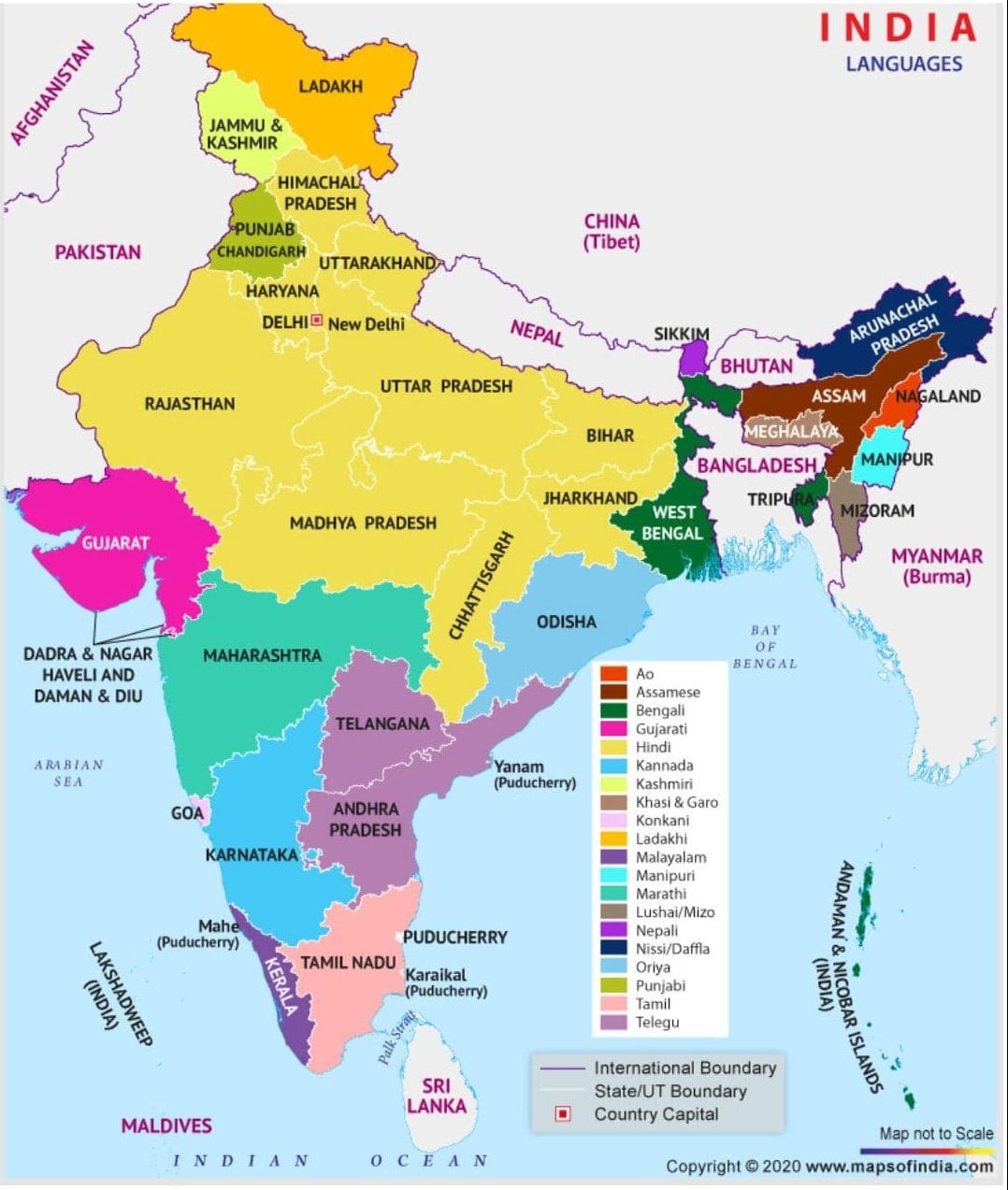

The languages and dialects spoken in North India broadly belong to the Indo-Aryan family that has its roots in modern European languages. These primarily include Hindi, Urdu, and Punjabi.
People in Southern India majorly speak one of the four chief Dravidian languages that are said to have evolved over 5,000 years ago – Telugu, Tamil, Malayalam, and Kannada.
4. North India or South India Food
Even though both regions boast delectable cuisines and mouth-watering delicacies that have gained immense popularity and love across the world, the North India vs South India food battle remains unresolved!
The south boasts a delectable array of comfort food including dosa, idlis, vadas, uttapams, lentil soups, and rice-based dishes along with a variety of seafood.
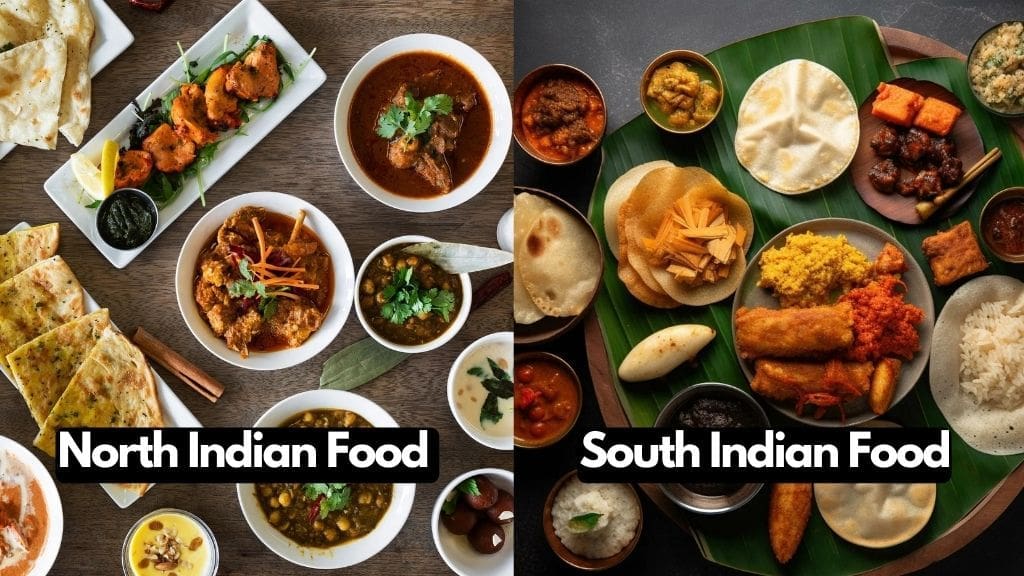
 The north, on the other hand, is famous for its heavy signature dishes like butter chicken, tandoori chicken, chapatis and naans (flatbreads), samosas, biryani, and chhole bhature!
The north, on the other hand, is famous for its heavy signature dishes like butter chicken, tandoori chicken, chapatis and naans (flatbreads), samosas, biryani, and chhole bhature!
ALSO SEE – Best food in Kerala to try on your holiday
What remains constant, whether you’re in North India or South India, is their unified love for spicy and flavorful curries and hot beverages like tea and coffee (or kapi!).
5. Temple Architecture
Yes, you read that right. The North India vs South India differences list extends even to the architecture of its holy shrines!
Hindu temples in the north are mostly in the Nagara or Indo-Aryan style of architecture, while those in the south are in the Dravida style of architecture. South Indian Temples are usually much larger than North Indian Temples.
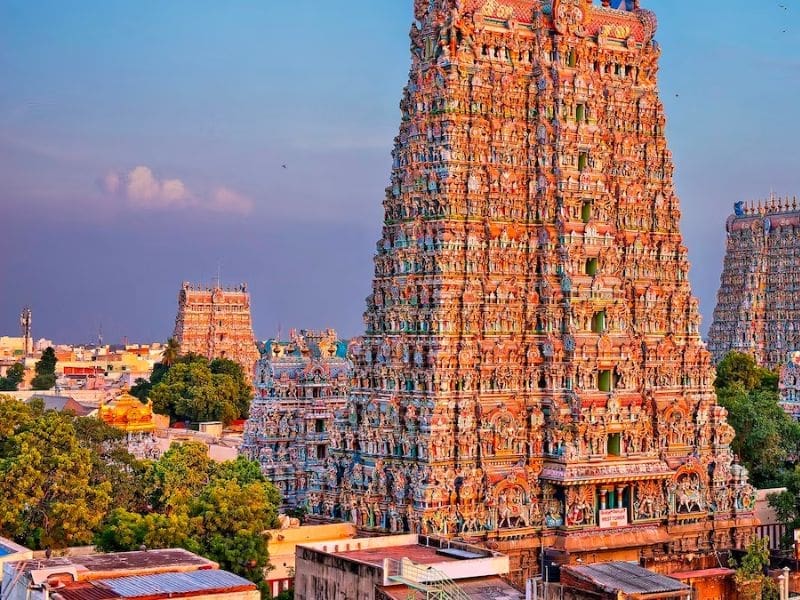

Hindi temples in the north are generally smaller and dominated by a mountain-shaped tower or spire on top. In the south, however, the temples are bigger with more complex structures and a pyramid-style entrance. Many Hindu temples in the south also tend to have more detailed and colorful carvings of gods and goddesses.
ALSO SEE – Top 20 Famous Temples in Kerala to visit (UPDATED)
6. North India or South India Dresses
An important aspect that sets North India and South India apart is the style of clothing.
The traditional attire of the North differs greatly from that of the South. Women in the north wear ‘salwar kameez’, while men either wear ‘kurta pajama’ or formal wear like pants and shirts.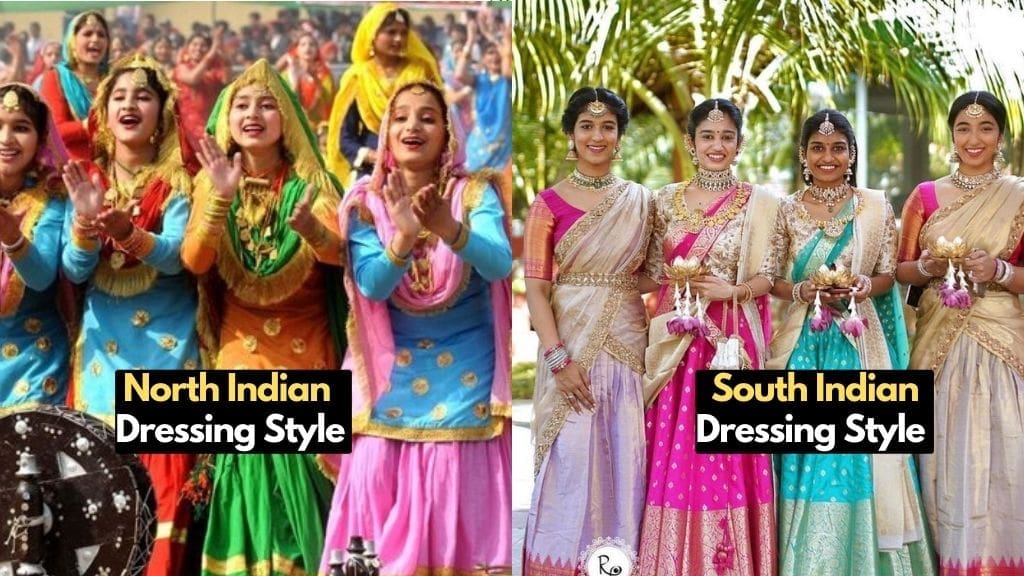

Men in the south wear ‘dhotis’, ‘veshtis’, or colorful ‘lungis’, while women wear brightly colored sarees and jasmine (gajra) in their hair. Younger and unmarried women in the south wear ‘langa voni’, a shorter version of the traditional South Indian saree.
7. Cost of the Tour Package
Whether you’re in North India or South India, you’re bound to love the sights and there are multiple options to stay during your holiday from the beaches of Goa ( which is not in North or South India) to the forests in Central India
South India tends to be cheaper than North India and has more accommodation options and comfortable travel options. Stunning Scenery is one of the main reasons to visit South India.
ALSO SEE – Kerala Trip Cost- How much does it cost for a Kerala Holiday?
While the north is known for its historical sites like Taj Mahal and palaces the south is more into Wellness Experiences and Wildlife Tours. You’d mostly enjoy moderately priced cultural experiences like Bharatnatyam and Kathakal in in South India and instruments like violin, veena, mridangam, jalatharangam, and gottuvadhyam while in North India you enjoy group cultural performances like Rajasthan Folk Dances and Garbha Dance in Punjab.
8. Dances and Culture


Kathak in North India and Kathakali in South India are loved all over the world as two of the most vibrant and expressive dance forms in India.
Kathak in the north was born out of the influences of Muslim invaders. But dance forms in the south are a product of local culture and heritage and not influenced by foreign elements.
ALSO SEE – Top 10 Dances in Kerala that will enchant you
Kathak, Garba, Ghoomar, and Bhangra are some of the most popular dance forms in north India. While Kathakali, Mohiniyattam, Bharatnatyam, Kuchipudi, and Odissi are popular in the south.
9. History
Several colonies and dynasties ruled over different parts of India before it gained independence. Foreign invaders like the Mughals and British were mostly active in the northern region owing to its ideal geography and weather.
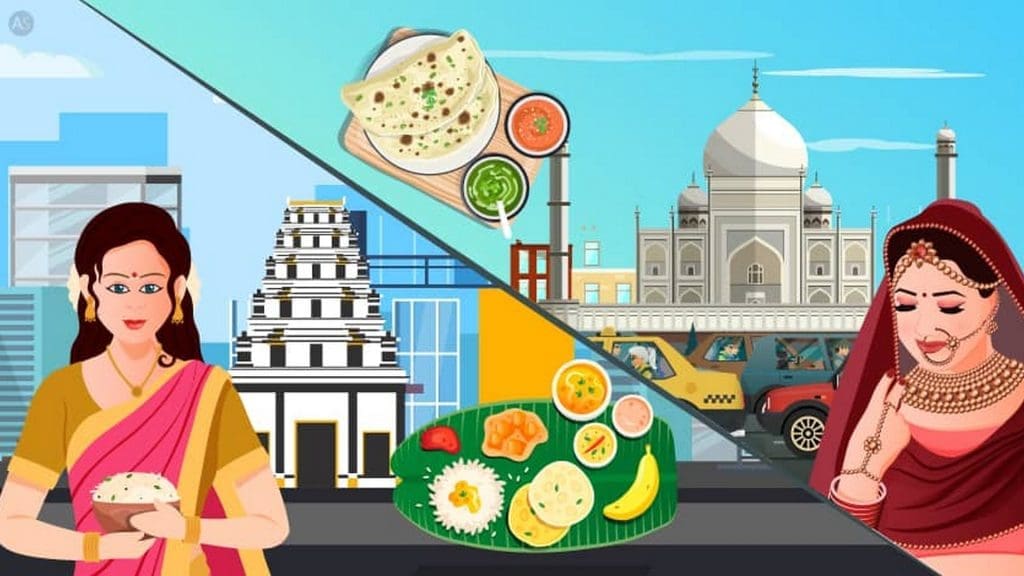

The Persian invasion and the onslaught of the Greek ruler Alexandre III ended up influencing the culture of north India alone.
The South was mostly used as a trading medium. The coastal terrain and vast oceans on either side provided the perfect opportunity for Portuguese colonies to establish trading ports and networks with the Arabs, Romans, Dutch, Babylonians, Assyrians, and Egyptians.
North India or South India -Which region will you explore first?
Now that you know about both north and south India, which region will you explore first? Which is best for your India tour package ?
It’s all about your personal tastes and what you like to enjoy on a holiday.
If you start your India tour with the knowledge that no matter how many days or length of the tour, the experience will never be enough as you experience Unity in Diversity all across India and you will always comeback for more.
The stark contrast between North India vs South India offers travelers a melting pot of rich cultures and traditions. Whether you visit North India or South India, you’ll end up discovering the most thrilling experiences and vivid sights! Happy tripping!
